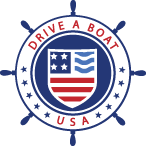Boating 101: What You Need to Know to Go Out on the Water
The water is calling! Whether you’re dreaming of a peaceful day fishing, a sunset cruise, or the thrill of watersports, boating is a fantastic way to connect with nature and enjoy quality time with family and friends.
For new recreational boaters in the United States, the journey onto the water starts with understanding a few fundamental principles. This guide covers the absolute basics to help you get started safely and legally.
Key Takeaways
- Safety first: Always have a Personal Flotation Device (PFD) for every person on board, and make sure children under 13 wear one while underway. It’s the law.
- Learn about boating: Complete a certified boating safety course if your state requires it, or even if it doesn’t.
- Carry the required gear: Your boat must have essential safety items, including a sound-producing device (like a horn), Visual Distress Signals (VDS) in coastal waters, and the correct fire extinguishers and navigation lights.
- Know the rules: Always maintain a proper lookout and safe speed. Learn the rules of the road and how to identify navigation aids before taking to the water.
- Register your boat: Your motorized boat must be registered in its primary state of use, with numbers and decals clearly displayed on the hull.
1. Safety First: Learn About Boating Regulations and Best Practices
Boating safety is non-negotiable. Before you even think about launching, make sure you have the proper safety gear and know key procedures.
2. Safety Gear: Wear a life jacket (or PFD)!
A life jacket is the most important piece of safety equipment for any boater of any age, in any location. Federal law requires that all recreational vessels must have at least one correctly-fitted, wearable PFD for every person on board. Additionally, children under 13 must wear a PFD while the vessel is underway, though state laws can vary—always check your local regulations.
Other boating safety equipment is also required, including:
Visual Distress Signals (VDS)
Visual Distress Signals are required for boats operating in coastal waters, the Great Lakes, and open water beyond three miles from the coastline. These can include flares, a distress flag, or an electric distress light.
Sound producing device
All boats must have a way to make a sound signal to communicate and warn other vessels, such as a whistle, horn, or bell.
Fire extinguishers
Fire extinguishers are required on boats with an inboard engine, closed compartments (storage areas under seats don’t count), double bottoms, or permanently installed fuel tanks. Make sure you have the right type and number on board.
Navigation lights
If you plan to operate between sunset and sunrise, or during periods of reduced visibility (fog, rain), your boat must display the appropriate navigation lights to show your vessel’s position and direction.
3. Take a boating safety course
Most states require boaters who were born after a certain date to pass a certified boating safety course and carry a boater card (the exact name will differ depending on your state, but the concept is basically the same).
Even if your state does not require it, taking a course from an approved organization like Drive A Boat USA is highly recommended. These courses cover everything from navigation aids to emergency procedures.
Learning the “Rules of the Road”
Just like driving a car, there are rules for operating a boat. These are often referred to as the “rules of the road” (even though they apply to the water!).
Important points to keep in mind:
Keep a clear lookout
Always maintain a proper lookout by sight and hearing. Never operate your boat while distracted.
Maintain a safe speed
Always operate at a speed that allows you to take proper and effective action to avoid collision, and respect local boating speed limits.
Learn the three basics of crossing
Learning the right-of-way rules for boating is key to avoiding collisions. When two vessels approach each other, one is the “stand-on” vessel (maintains course and speed), and the other is the “give-way” vessel (takes action to keep clear).
- Meeting Head-On: Both vessels are “Give-way” and should turn to starboard (right) to pass port-to-port (left side to left side).
- Crossing Paths: The boat to the right is the “stand-on” vessel. The boat to the left is the “give-way” vessel.
- Overtaking: The boat being overtaken is the “stand-on” vessel, and the one passing is the “give-way” vessel.
4. Make sure your boat is in good condition, and legal
Consider getting a free, no-fault Vessel Safety Check from the U.S. Coast Guard. They will check your boat for compliance with all federal and state requirements and help you identify any deficiencies before you run into a problem with law enforcement, or find yourself fin a situation where you need rescuing, such as capsizing.
Boat registration and titling
In the United States, every motorized boat principally operated on federal waters (which includes most recreational waterways) must be registered in the state where it is primarily used. Be prepared with appropriate documents on-hand, and make sure you display your HIN and registration number appropriately.
Learn all about safe boating with Drive A Boat USA
Boating is a rewarding activity that offers endless fun, but it demands respect for the environment and the rules. By prioritizing safety, completing your education, and verifying that you have all the required gear, you will set yourself up for smooth sailing on every trip.
Drive A Boat USA offers approved, state-specific boater safety courses. Our 100% online state-specific boating courses will get your certified and ready to take to the water with solid knowledge of boating safety in New York, Florida and California.

